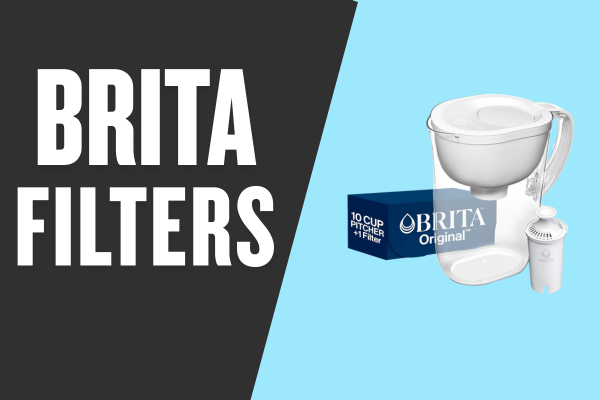What Brita Filters Miss in Tap Water Filtration


Content
The Hidden Problem With Brita Filters: What They Don’t Tell You
Brita is one of the most recognizable names in water filtration. Its pitchers and dispensers are featured in kitchens around the world, promising better-tasting water with a simple cartridge swap. But while Brita filters are effective at improving flavor and reducing chlorine, they fall short where it matters most, removing health-threatening contaminants.
Millions trust Brita for cleaner water. Concern is what these filters leave behind, and the misplaced confidence that follows.
What Brita Filters Are Designed to Do
Brita uses a combination of activated carbon and ion-exchange resin to reduce chlorine, some sediment, and metallic taste. Most of their products are certified under NSF-42, which means they meet standards for improving aesthetic aspects of water, like odor and appearance.
What that certification doesn’t guarantee is protection against harmful toxins. NSF-42 has nothing to do with removing lead, PFAS, pesticides, or pharmaceuticals. When consumers assume “filtered” equals “safe,” that gap becomes a serious problem.
Contaminants Brita Fails to Remove
Independent lab tests and consumer investigations consistently show that Brita filters do not remove:
- PFAS (per- and polyfluoroalkyl substances) – Known as “forever chemicals,” these accumulate in the body and have been linked to cancer, thyroid disorders, and reproductive harm.
- Lead and arsenic – Common in homes with older plumbing or in cities with outdated water infrastructure. Even trace amounts can cause neurological damage.
- Pharmaceuticals and endocrine disruptors – These contaminants enter the water supply through wastewater and runoff, and require advanced filtration to remove.
- Microplastics and bacteria – Without physical barriers or UV treatment, basic filters allow these microscopic threats to pass through.
Brita filters are not certified under NSF-53 or NSF-58, which are required for removing health-based contaminants. In contrast, many reverse osmosis and multi-stage filtration systems, like those compared in H2OScore’s Top Under-Sink Filter Rankings, do meet these higher standards.

Why TDS Readings Are Misleading
Many people test their water using a TDS (Total Dissolved Solids) meter and interpret a lower number as proof that their water is clean. That’s a critical misconception.
TDS meters only measure the presence of dissolved minerals and salts. They do not detect toxic contaminants like PFAS, pesticides, lead, or pharmaceuticals. A zero or low TDS reading can occur even if the water still contains compounds that pose long-term health risks. This is why H2OScore focuses on verified lab-based contaminant removal data, not TDS scores, as the baseline for filter evaluation.
Complaints from Brita Users
Users frequently report unexpected issues after using Brita filters for a few weeks:
- A metallic or bitter taste returning to the water
- Filters clogging prematurely, reducing flow rate
- Concerns about mold or bacterial growth inside old filters
- “Slippery” or strange texture in the water after expiration
These problems tend to worsen in homes with high chlorine levels or where filters are not replaced frequently. Because Brita cartridges lack antimicrobial protection or pre-sediment filtration, their performance drops quickly in life conditions.
A Legal Case That Exposed Deeper Issues
In 2023, Brita’s parent company was named in a class-action lawsuit alleging false advertising. The complaint stated that Brita’s marketing misled customers into thinking the filters removed contaminants like lead and PFAS, despite lacking the certifications or technology to do so.
This lawsuit highlighted a bigger issue: marketing often shapes consumer perception more than science. When a product looks clean, tastes better, and is sold under the label “filter,” it’s easy to believe it’s doing more than it is.
Filters Should Remove More Than Taste and Odor
Most people buy water filters because they’re concerned about safety, not flavor. Yet the majority of Brita’s performance revolves around aesthetic improvement, not toxic contaminant removal. That creates a dangerous mismatch between what people believe they’re getting and what they’re actually drinking.
For water that’s truly safer to consume, filters must address a broader range of threats. That means using multi-stage systems with certified removal capabilities for VOCs, heavy metals, volatile organics, and microbial threats.
H2OScore’s platform makes this process easier by analyzing over 100 filters and highlighting which models effectively remove contaminants, not just make water taste better.
What to Look For in a More Reliable Filter
To protect against long-term health risks, a filter should meet at least one of the following:
- NSF-53 or NSF-58 Certification (for health-based contaminant removal)
- Multi-stage filtration including carbon block, sediment pre-filter, and reverse osmosis
- Lab-tested removal of PFAS, lead, pesticides, and pharmaceuticals
- Transparent performance data published by independent platforms like H2OScore
Filters like the AquaTru or Bluevua systems offer stronger removal capabilities than basic pitcher filters, and they’re now available without complex installation.
Brita filters are affordable, convenient, and widely available. But when it comes to protecting your health, convenience should never replace effectiveness. Knowing what your filter does, and more importantly, what it doesn’t, is the first step toward making a smarter, safer choice.


